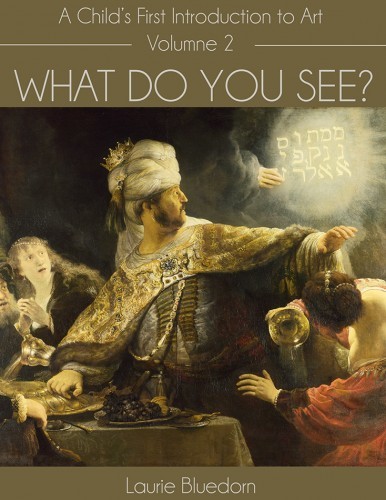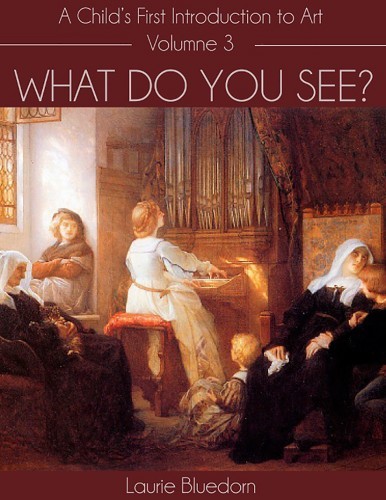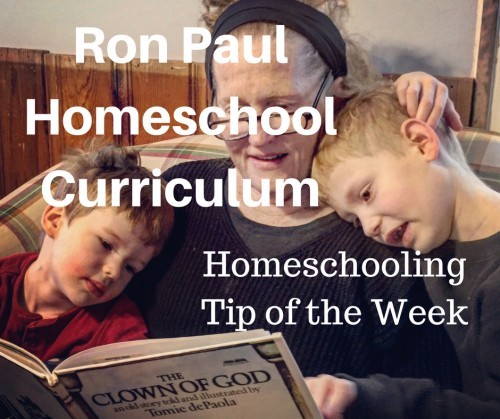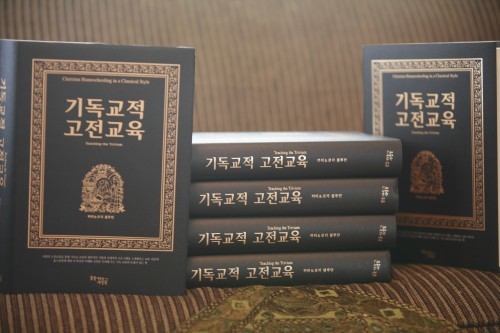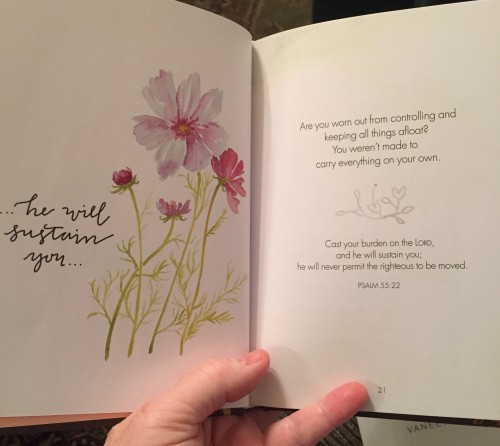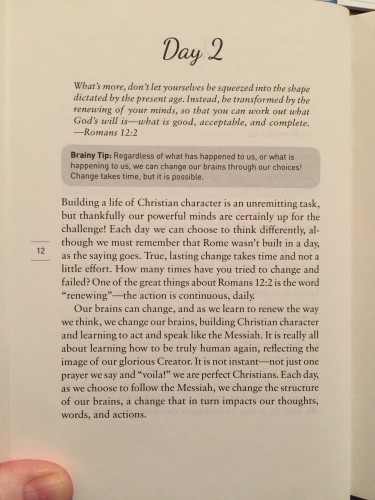Laurie Bluedorn's Blog, page 10
March 4, 2019
Classical Education and Delayed Formal Academics — Essential and Nonessential
I came across your website recently in my search for classical curriculum providers. I read (and re-read) your article, Ten Things to Do with Your Child before Age Ten, and it has been insightful, however I have some questions.
If you’ll indulge me for a moment, I’ll provide a brief profile of my home learning environment. I am fairly new to homeschooling. We began just over two years ago, when my eldest was 4. I taught her to read and kept things fairly simple. She is now 7 and is a voracious reader. My 4 1/2-year-old is now learning how to read (and, hopefully, my 10-month-old will be just as enthusiastic).
My eldest is now in grade 1 and is working through Saxon Math, Shurley Grammar, handwriting, and a History/Bible curriculum through a private Christian school in the States (we’re in Canada). I had hoped to incorporate French into our studies, but simply could not find the time (learning French is a must in eastern Canada, so it will have to be a summer school project). We have naturally followed many of the suggestions you make in the above-mentioned article, such as teaching them to read early on, reading to them daily, frequent library trips, family devotions, however as I sit down to consider next year’s curriculum for my eldest, I am frustrated. I don’t believe I can continue with what I am doing and remain sane.
My husband and I believe that the classical approach to educating our children is the best way to go, but there are so many different points of view out there. I appreciated the information on your website, however what to choose remains vague for me. The bottom line is, I lack both the experience and confidence to create my own curriculum. What I like about the curriculum I’ve been using is that it is all set out for me — weekly lesson plans, beautiful reference books, great historical fiction, all tied into what we are studying. But as you’ve warned on your website, working with curriculum designed for a school can cause difficulties, and, from what I can gather from your recommendations, the sort of structured study that we’ve been engaged in is too much at this stage.
Also, I am unsure what you mean by informal math – is Saxon Math considered informal? What math programs do you recommend? I noticed that you do not even mention mathematics before age ten in your Suggested Course of Study outline. What about an English grammar program? We’ve been working through Shurley Grammar (a bit tedious, I must say), thinking that this was necessary, but you seem to be suggesting waiting for some time before digging into formal grammar. Are formal spelling and creative writing programs unnecessary as well at this point?
You mention
learning Greek and Latin – I can’t even fit French instruction
in!
Please forgive me for dumping on you
here, but your suggestions just might be what I need to relieve the stress
I’m already feeling. What I really need is something more
concrete. As you have probably gathered by now, I’m not enjoying
this process, that is, trying to decide exactly what to provide for my children’s education. There is simply too much out there.
Please help!
Thank you very much for your
time,
Linda
————————–
Reading between the lines, I detect you are like me. We are a bit of a perfectionist, wanting to make sure we cover all the basics in a thorough manner. We enjoy learning and we see all this information we think we need to study, and we enjoy the process of teaching our children. It’s just that there’s SO MUCH to cover. Where to begin?
There’s only so much time in the day. This needs to be our guiding principle. Perhaps I can tap into my experiences to help you weed out the nonessential from the essential.
Let’s review what we have elsewhere written concerning what to do with a child before age ten. Around age ten, the brain becomes physically able to make more complex connections, which, among other things, makes the child more able to handle abstract concepts and helps the child with self-management and self-control. At age ten, the child is fully entering the grammar stage. Before this time, the child is mostly dependent upon his concrete sensory experiences for learning. He is really in a pre-grammar stage. He is still “booting up,” to put it in computer lingo. (See books by Jane M. Healy such as Failure to Connect: How Computers Affect Our Children’s Minds and What We Can Do About It[image error], Your Child’s Growing Mind: A Guide to Learning and Brain Development from Birth to Adolescence[image error], Endangered Minds: Why Children Don’t Think and What We Can Do About It[image error])
1. Reading and Handwriting
Sometime before your child is ten, you should teach him to read using a good intensive phonics method such as All About Reading. The age a child learns to read is no indicator of how smart he is or how well he will do in academics later on. Our children learned to read anywhere from age five to age nine. At the same time he learns to read he should learn to write his letters. Copywork is a good way to practice handwriting skills and to prepare him for creative writing when he is older.
Essential: teach child to read using phonics; copywork/handwriting
Nonessential: handwriting workbooks; teaching phonics/reading after the child is proficient in reading; copywork curricula; spelling curricula; grammar curricula; creative writing curricula
2. Narration
Charlotte Mason developed the concept of narration in Britain at the close of the nineteenth century. The concept has been reintroduced to homeschooling families by Susan Schaeffer Macaulay in her book For the Children’s Sake: Foundations of Education for Home and School[image error] by Karen Andreola through her articles in Practical Homeschooling.
If narration is a new concept to you, then it is best to start out small. Read to the child just one short paragraph from a simple story, then ask him to retell, in his own words, what you just read to him. In the beginning you may need to prompt the child with questions about the passage. As the child becomes more practiced in the art of narration, he will be able to narrate longer and longer passages.
Narration is an exercise which builds mental stamina. According to Karen Andreola, Because narration takes the place of questionnaires and multiple choice tests, it enables the child to bring all the faculties of mind into play. The child learns to call on the vocabulary and descriptive power of good writers as he tells his own version of the story.
Essential: practice narration once a day
Nonessential: reading comprehension workbooks; grammar curricula
3. Memorization
Encourage the child to memorize things: the Greek and Hebrew alphabets, passages from the Bible, poetry, catechisms, excerpts from literature. Choose memorization topics which are important to your family. Perhaps the child can then recite his memory work in front of the family or a larger group. This is an excellent way to prepare the child for competitions in oral interpretation and speech and debate when he is older. Memorization, along with narration, trains, sharpens, and strengthens the mind and prepares the child for more rigorous studies later on. And that’s precisely what we want to do in the early years of a child’s life.
In your case, since learning French is a priority for your family, I would skip the Greek and Hebrew and concentrate on French. In a few years, if you are able, you can add the Greek, Hebrew, or Latin. Notice I said “if you are able.”
Essential: practice memorization once a day
Nonessential: memorizing random facts divorced from what is important to your family
4. Hearing and Listening
By reading aloud to your child, you teach him the sound of words and develop his vocabulary while enlarging his understanding of the world and developing his imagination. We suggest you read to each child at least two hours a day. Read from a wide variety of good literature: biographies and historical fiction. Include books on science, geography, art, music, and history. Audio books can be substituted for the parent reading, as necessary.
You can develop your child’s idea of the continuity of history by making a time line of the things you read. Tape a long piece of paper to the wall where he will see it every day and mark it off in centuries. When you read about the life of Bach, mark his birth and death on the time line. When you read about the invention of the printing press, mark that point on the time line.
So you see, your science and history will be covered by your read-alouds (or what you choose for the child to read). You can include simple projects to go along with your reading, similar to what is included in the Five in a Row[image error] curriculum.
Essential: read aloud two hours per day or use audio books
Nonessential: formal history or science curricula
5. Family Worship
With regular family worship, the mind is developed along spiritual and moral lines in a way which cannot be accomplished by Bible workbooks.
A method of Bible study we suggest that is profitable is to have someone read a passage of Scripture (the NKJV is a translation suitable for children), then have everyone in the family ask at least one question about the passage. Before age ten, you may expect a child to ask mostly grammar-level questions of fact. By age 13 he will ask more logic level questions of theory, and by age 16 he will ask more rhetoric-level questions of practice.
Essential: regular family worship
Nonessential: Bible study curricula; children’s Bibles
6. Arts and Crafts
Young children learn more through their senses. They need more hands-on manipulatives before age ten. Give them plenty of time to experiment with art and crafts. In the main room of your house, or wherever it is you spend the most time, keep a low shelf stocked with good-quality colored pencils, paints, clay, paper, scissors, glue, wallpaper sample books, fabric sample books, different kinds of crayons, sewing supplies, etc. along with a small table with chairs.
Children can easily work on their projects while you read to them or they listen to audio books. Younger children can do crafts while the older ones are being helped with math or science.
Essential: good quality art and craft supplies readily available to the child
Nonessential: a Better Homes and Gardens home
7. Field Trips
Take lots of field trips. Early on, get into the habit of visiting the library on a weekly basis.
When the child is four or five, begin attending your local Science and Engineering Fair. Observe all of the different kinds of projects and experiments. Encourage the child to think of what kind of experiment he could enter when he’s 13 (in the logic stage).
Take time to attend concerts and plays, museums and exhibits. Visit workplaces. Give him experiences from which to build his understanding of the world; experiences he will draw upon and perhaps revisit when he is older.
Essential: use field trips and other experiences to expand your child’s world
Nonessential: field trips in a cyber world
8. Work and Service
Help your child develop a love for work and service. From the time a child is able to walk and talk, he should be given regular chores to perform. We’re not talking about just feeding the dog or making his bed. A five-year-old is quite capable of putting the dishes and laundry away. A ten-year-old can prepare simple meals from start to finish. Children of all ages can straighten a house. The mother should never pick up anything off the floor. Your goal should be that by the time a child is in his teens he will be able to take over the running of the household.
Along with work, children should be taught to serve. One way we helped our children learn to serve was by visiting nursing home residents on a regular basis.
Essential: chore schedules which are clear and understood by the child
Nonessential: parent cleaning up toys while child is idle
9. Discipline
Children need parents to discipline them, or they will never learn self-discipline. If the child does not develop self-discipline, he will fail in many things including the academics you are preparing him for.
Ask yourself, “Do I speak to my child in a loving and respectful tone?” “Am I satisfied with the obedience of my children? Do I enjoy being around my children? Do my children honor and respect me?” If your answer is, “No,” to any of these questions, perhaps you should re-evaluate your priorities.
Essential: do all things with love
Nonessential: harsh communication by the parent
10. Play
Give the child plenty of time to explore and play. Don’t buy “toy store” toys (they’re expensive and are usually forgotten after the newness wears off). Invest in real things. Garage sales and auctions are an unending source for things like sewing machines, small tools for working in the garden, hammers, nails, and things for building, and maybe some wooden blocks and dress-up clothes. Buy tools for exploring (a good microscope, telescope, binoculars, dissecting equipment, basic chemistry equipment, etc.), not toys for adoring. Teach your children how to use them responsibly (safe, neat, and orderly – clean up when you’re done), and make them readily available for when your children want to use them.
Make sure much of their playtime is spent outdoors. If I had it to do over, I’d try for the goal of two hours outside each day. “Explore what childhood might look like if the amount of time kids spend outside rivaled what the amount of time they spend in front of screens.” –1000 Hours Outside
Essential: Two hours per day of outdoor play
Nonessential: playing in a cyber world
You’ll notice we do not include formal math or formal grammar. We have written elsewhere about this subject, so I won’t say more here. Concerning grammar, our language arts recommendations for before age ten are reading aloud, copywork, memorization, and narration as described above.
February 24, 2019
Thou, thou alone can steer us over the bar between yon sunken rocks, safe into the fair haven
C.H. Spurgeon
Morning and Evening Daily Readings
September 22, Evening
When my heart is overwhelmed: lead me to the Rock that is higher than I. –Psalm 61:2
Most of us know what it is to be overwhelmed in heart; emptied as when a man wipeth a dish and turneth it upside down; submerged and thrown on our beam ends like a vessel mastered by the storm. Discoveries of inward corruption will do this, if the Lord permits the great deep of our depravity to become troubled and cast up mire and dirt. Disappointments and heart-breaks will do this when billow after billow rolls over us, and we are like a broken shell hurled to and fro by the surf. Blessed be God, at such seasons we are not without an all-sufficient solace, our God is the harbour of weather-beaten sails, the hospice of forlorn pilgrims. Higher than we are is he, his mercy higher than our sins, his love higher than our thoughts. It is pitiful to see men putting their trust in something lower than themselves; but our confidence is fixed upon an exceeding high and glorious Lord. A Rock he is since he changes not, and a high Rock, because the tempests which overwhelm us roll far beneath at his feet; he is not disturbed by them, but rules them at his will. If we get under the shelter of this lofty Rock we may defy the hurricane; all is calm under the lee of that towering cliff. Alas! such is the confusion in which the troubled mind is often cast, that we need piloting to this divine shelter. Hence the prayer of the text. O Lord, our God, by thy Holy Spirit, teach us the way of faith, lead us into thy rest. The wind blows us out to sea, the helm answers not to our puny hand; thou, thou alone can steer us over the bar between yon sunken rocks, safe into the fair haven. How dependent we are upon thee — we need thee to bring us to thee. To be wisely directed and steered into safety and peace is thy gift, and thine alone. This night be pleased to deal well with thy servants.
Volume One of our art curriculum is free on Amazon Kindle February 26-March 2
What Do You See? A Child’s First Introduction to Art Volumes One, Two, and Three
These three ebooks can be purchased on Amazon Kindle for $2.99 each….
….but, for five days, February 26-March 2, Volume One will be free.
What Do You See? A Child’s First Introduction to Art
This curriculum is a gentle and easy introduction to art appreciation for children, ages 4-12. Our goal is to introduce children to basic concepts in learning how to look at a piece of art and evaluate it. In addition, we want to spark in the child a love for the great works of art.
The students and teacher should spend time observing the painting, and then answer the included questions. Since one of our goals is to learn to love art, we recommend that you ask the child to answer the questions orally, not with pencil and paper. We want to make the learning experience enjoyable for you and the children.
Each volume introduces only one elementary art principle.
Volume One — Center of Interest
Volume Two — Primary Colors
Volume Three — Source of Light
You can download your free copy of Volume One here.
Table of Contents for Volume One
1. Little Red Riding Hood and Grandmother by Harriet Backer
2. The Dog Cart by Henriëtte Ronner-Knip
3. The Birthday Cake by Victor Gabriel Gilbert
4. Boy with Baby Carriage by Norman Rockwell
5. Feeding the Baby by Axel Theophilus Helsted
6. Elsie Cassatt Holding a Big Dog by Mary Cassatt
7. Carnation, Lily, Lily, Rose by John Singer Sargent
8. Cottage Girl with Dog and Pitcher by Thomas Gainsborough
9. A Child’s Menagerie by Eastman Johnson
10. Belshazzar’s Feast by Rembrandt
You can buy Volume Two here.
Table of Contents for Volume Two
1. Le Tour Du Monde by André-Henri Dargelas
2. Teaching a Dog New Tricks by John Arthur Lomax
3. The Baptism of the Eunuch by Rembrandt
4. Arabs Crossing the Desert by Jean-Leon Gerome
5. The Blind Girl by John Everett Millais
6. The Good Turn by George Hillyard Swinstead
7. The Animals Entering the Ark by Jan Brueghel the Elder
8. The First Lesson by Louis-Emile Adan
9. Baseball Players Practicing by Thomas Cowperthwait Eakins
10. The Reading Lesson by Paul Seignac
You can buy Volume Three here.
Table of Contents for Volume Three
1. The Burning of the Houses of Parliament by Joseph Mallord Wil-liam Turner
2. A Dinner Table at Night by John Singer Sargent
3. Harmony by Alexandre Cabanel
4. Keelman Heaving in Coals by Night by Joseph Mallord William Turner
5. Protecting the School Children by Andre Henri Dargelas
6. Saint Michael and the Dragon by Raphael
7. In Charge of Baby by Winslow Homer
8. A Child Peeling Potatoes by Evert Pieters
9. Tiger on the Watch by Jean-Leon Gerome
10. Saul and David by Rembrandt
You can also purchase the PDF version of these ebooks here.
February 23, 2019
Ron Paul Homeschool Curriculum Newsletter — Free How-To Video Courses
From the Ron Paul Homeschool Curriculum Newsletter
Free How-To Video Courses
One of the great entrepreneurial stories in history is Lynda.com.
Lynda Weinman started a free website in 1995. It taught non-tech people how to design websites. She grew it. She hired instructors.
She sold the company in 2015 for $1.5 billion. LinkedIn owns it now. Her share was over a quarter of a billion dollars. Her story is here.
These are excellent instructional videos. There are over 4,000 courses.
Here is the good news. Your local public library may have a subscription. If it does, you and your children may be able to take courses for free. It’s worth asking.
February 22, 2019
The “At Risk Fallacy” and Homeschooling
Because there have been a few cases of child abuse in homes where the parents claimed to be homeschooling, therefore the state claims that all homeschooling families must be regulated in some way.
This is called the “At Risk Fallacy” — If there is even the chance that something can happen or that one person might be harmed, then we need to pass a law to control all in order to protect the people from themselves. The “At Risk Fallacy” is used to justify controlling all because of the stupid acts of a few. This type of thinking controls the government attitude nowadays. It doesn’t matter what are the unintended consequences of such an attitude.
Objections to states passing additional regulations on homeschooling families:
–The state has a poor record of controlling child abuse in their own schools. Would their encompassing all children — public, private, and homeschool — keep children safer?
–We here in the U.S. have the Bill of Rights so that we can oversee the state to keep them from using this “At Risk Fallacy” to take away all our rights.
–There already are laws on the books which address possible child abuse in homeschooling families.
–“A statistical analysis of 18 years of data from all the U.S. states found no relationship between the degree of state control or regulation of homeschooling and the frequency of abuse of homeschool students.” –Brian D. Ray, president of the National Home Education Research Institute
Are there other objections to the “At Risk Fallacy” being applied to homeschooling? What do you think?
Laurie Bluedorn
triviumpursuit.com
February 21, 2019
The Lord has not passed you by — approach him and be at peace
[image error] [image error]
Morning And Evening Daily Readings by C.H. Spurgeon [image error]
February 24, Evening
O Lord of hosts, how long will You not have mercy on Jerusalem … And the Lord answered the angel … with good and comforting words. –Zechariah 1:12-13
What a sweet answer to an anxious enquiry! This night let us rejoice in it. O Zion, there are good things in store for you; your time of travail shall soon be over; your children shall be brought forth; your captivity shall end. Bear patiently the rod for a season, and under the darkness still trust in God, for his love burns towards you. God loves the church with a love too deep for human imagination: he loves her with all his infinite heart. Therefore let her sons be of good courage; she cannot be far from prosperity to whom God speaks good words and comfortable words. What these comfortable words are the prophet goes on to tell us: I am jealous for Jerusalem and for Zion with a great jealousy. The Lord loves his church so much that he cannot bear that she should go astray to others; and when she has done so, he cannot endure that she should suffer too much or too heavily. He will not have his enemies afflict her: he is displeased with them because they increase her misery. When God seems most to leave his church, his heart is warm towards her. History shows that whenever God uses a rod to chasten his servants, he always breaks it afterwards, as if he loathes the rod which gave his children pain. Like as a father pities his children, so the Lord pities them that fear him. God has not forgotten us because he smites — his blows are no evidences of want of love. If this is true of his church collectively, it is of necessity true also of each individual member. You may fear that the Lord has passed you by, but it is not so: he who counts the stars, and calls them by their names, is in no danger of forgetting his own children. He knows your case as thoroughly as if you were the only creature he ever made, or the only saint he ever loved. Approach him and be at peace.
February 12, 2019
Primary Literary Sources for Ancient History DVD — one copy left
Primary Literary Sources for Ancient History DVD contains the complete texts of over 1,200 individual works from 98 different authors — from Aeschines to Xenophon – Greek, Roman, Egyptian, and Babylonian. It is like having an entire library of classical literature, except that you have it on a DVD instead of having actual hard copies of the books.
We have only one copy left.
$40 (free U.S. Media Mail shipping)
This DVD was produced to go along with our book Ancient History from Primary Sources: A Literary Timeline, which is on sale this week for $16.
One copy left Korean translation of Teaching the Trivium
Currently, there are three translations of Teaching the Trivium: Christian Homeschooling in a Classical Style. The Russian translation will be available in 1-2 years.
Spanish
Portuguese
Korean
The Korean translation appears to be out of print, but I have one copy to sell (U.S. addresses only) — $40 (free U.S. Media Mail shipping).
Ideas for your personal Bible study and prayer time
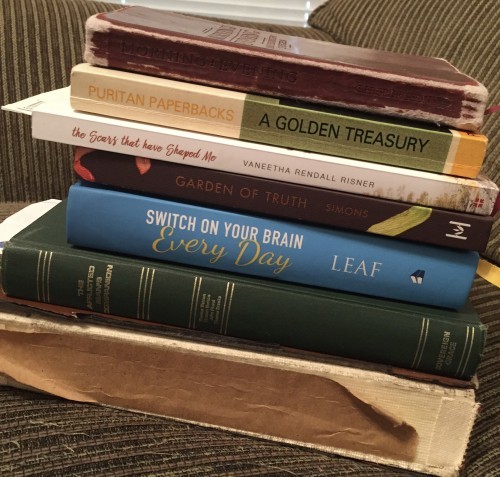
This is the stack of books which I currently use for my personal Bible study and prayer time — four of these are always in the stack, some are just temporary.

The Reese Chronological Bible[image error] — this is the Bible I’ve been using for 20 years or more.
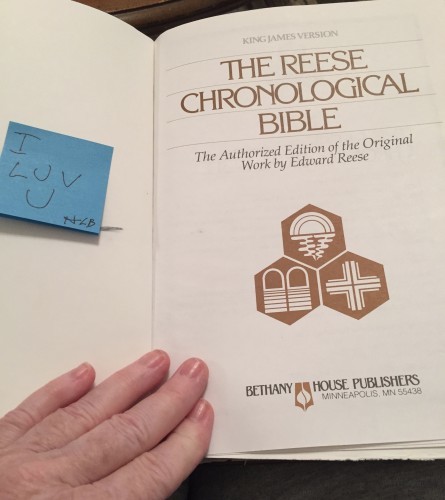
I would prefer a different translation, but it only comes in the KJV. I just learned about a new edition of the Reese Chronological Bible — KJV Reese Chronological Study Bible[image error]. I’ll be buying this ASAP.

Another important book to me — Morning and Evening Daily Devotional by C.H. Spurgeon[image error]

The Afflicted Man’s Companion[image error] — four books in one volume: A Divine Cordial by Thomas Watson; The Crook in the Lot by Thomas Boston; On Keeping the Heart by John Flavel; The Mute Christian Under the Smarting Rod by Thomas Brooks
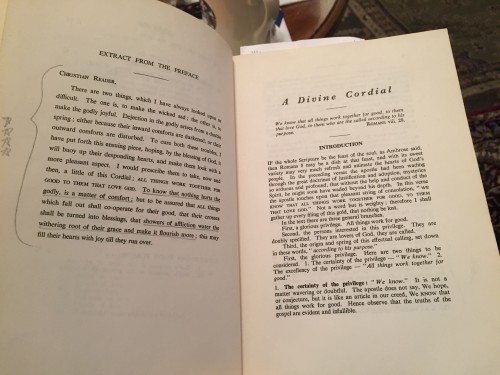
Excerpt from A Divine Cordial by Thomas Watson

A Puritan Golden Treasury[image error] — the last of the four books which is always in my stack
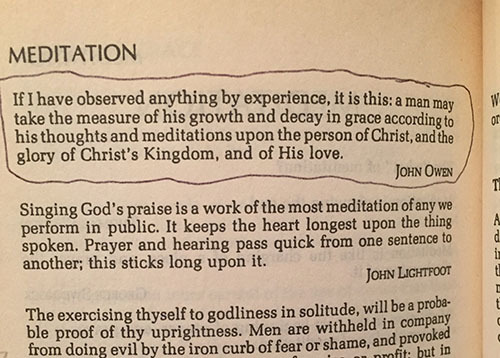
Excerpts from A Puritan Golden Treasury
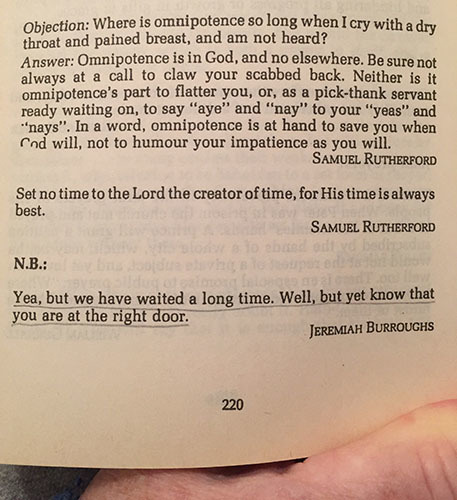
Excerpts from A Puritan Golden Treasury
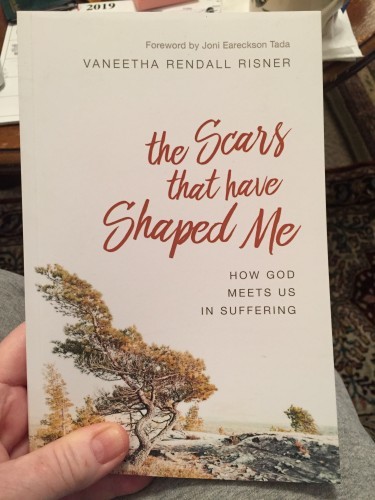
The Scars That Have Shaped Me: How God Meets Us in Suffering[image error] by Vaneetha Rendall Risner
Vaneetha Risner shares her story in a way that always points us to Christ and a sovereign God.
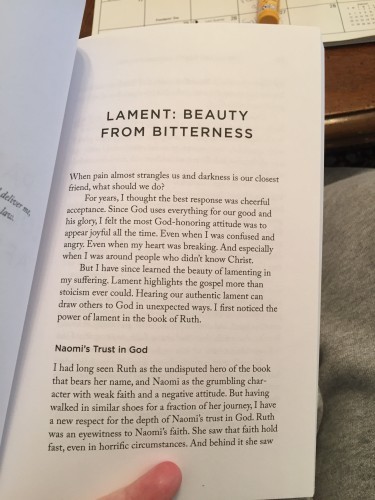
Excerpt from The Scars That Have Shaped Me

Garden of Truth[image error] by Ruth Chou Simons
Beautiful watercolor paintings of flowers with devotional readings — calming to the troubled soul.
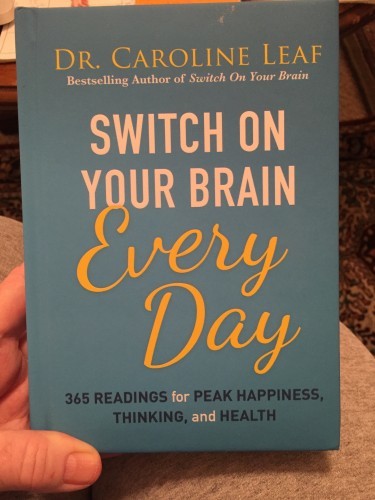
Switch On Your Brain Every Day: 365 Readings for Peak Happiness, Thinking, and Health[image error] by Dr. Caroline Leaf
Switch On Your Brain Every Day gives the “science” behind Philippians 4:8 and Romans 12:2.
4:8 Finally, brethren, whatever things are true, whatever things are noble, whatever things are just, whatever things are pure, whatever things are lovely, whatever things are of good report, if there is any virtue and if there is anything praiseworthy—meditate on these things.
12:2 And do not be conformed to this world, but be transformed by the renewing of your mind, that you may prove what is that good and acceptable and perfect will of God.
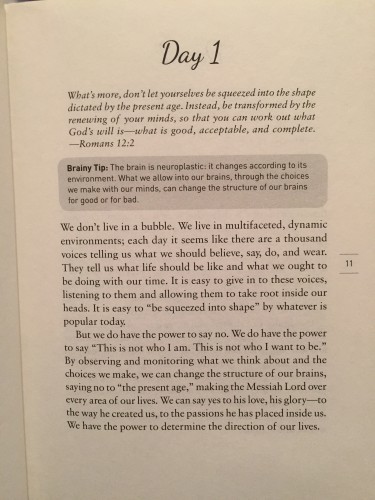
Excerpt from Switch On Your Brain Every Day
February 8, 2019
Very Shy 16-Year-Old Daughter — How Would You Answer This
We have a 16-year-old daughter who is very shy around people she does not know very well, even if she’s been around them occasionally. She seems content to just keep to herself in group situations, and does not desire to participate in any activity with anyone she is not VERY familiar and comfortable with. She will not reach out to others, and does not respond to others’ attention to her any more than mere politeness would require. She has said that at times she’s been asked questions in a group setting (church, enrichment classes) where she did not know the answers and was made to feel stupid in front of the others. These situations deeply hurt her very sensitive spirit, and therefore she continues to want to avoid all group situations (Bible study, etc.) whenever she can. At times, my husband and I have strongly encouraged or insisted that she attend various functions, but at other times we have let it slide. It is difficult to know when or if we should push, and if so, how hard. She does have a couple of friends and their families that she is comfortable being with, but has great difficulty meeting and getting to know new people. So, my question: What should be required of a shy child to participate in? Mainly, I ask this because I want to see her grow in her consideration of the comfort of others and dwell less on her own tendency to self-centeredness, which I see as a part of being shy. When and how, if at all, should we push her? How can we get her to grow in self-confidence in new situations, with new people? Will this come more with maturity? How can we address this issue sensitively and purposefully with our daughter? I was wondering if anyone had a similar situation with one, or more, of their children and would have any suggestions and/or words of wisdom for us. Thank you for your comments. Blessings, Janet
Responses from our readers
I was just like this daughter when I was growing up. I can’t speak for her, but when it all boiled down for me, the root of my shyness was pride and fear. I was too afraid of people thinking me any less than perfect, that I selfishly kept from engaging in conversations or doing things that I could not control the outcome – my appearing as “the perfect girl”, always saying the right thing, doing the right thing. I don’t know if this is her underlying motivation, but it was mine. As I got older (early teens I guess) I realized I did not want to be afraid of everything and I started pushing myself to talk to people I did not know well, and do things I had never done before. I also started completing projects I had left unfinished because I was afraid they would not be perfect. The end result was surprising to me – satisfaction of a job well done, though imperfect. Yes, I make many mistakes and feel awkward, and no one can accuse me of being perfect, but I am conquering the shyness because I have found things that are more important to me than preserving an (erroneous) illusion of perfection. My parents did not “make” me do these things. I don’t know if that would have helped or not. What I do know is that I had to work hard and be very uncomfortable at times to overcome shyness. I decided that I did not want to be the scared girl who missed out on everything because I was too shy to talk or participate. I still struggle with it but know the rewards far outweigh the challenge. I hope this is helpful. Blessings, Karen
——–
I agree with Karen. I was just how she described herself, but decided I didn’t want to be that way any longer when I was in my mid-20’s. If this is the case with the girl in the question, then forcing her to do things out of her comfort zone will not help, it will only hurt. She has to decide to make it happen. If she is willing to at least attend family functions or church functions, that’s great, but forcing her to participate in discussions or groups and be someone whom she is not, or at least not yet, will only make it worse. Who is she harming by being quiet, anyway? I think you should continue with the way you are handling it, making the decision for her to participate on a case by case basis.
———-
I would encourage and coach her to get over her shyness. Fear of rejection will only become worse and worse the more she avoids theses situations. Train her in theater techniques to lower her sensitivity and help her feel comfortable in her own skin. Give her safe situations in small groups to practice. Keep encouraging her, and help her progress to more and more situations. If this is not done she will be semi’ handicapped all her life.
————
I did the same. I started to decide that I did not want to be shy when I started working. I took a job as a hostess and that helped a great deal. My mother was often worried and tried to cajole me but it made me feel worse. Looking back I think I just needed the time to grow into my skin. Now with the confidence of age and God’s grace I am confident and talkative. I pray that for this girl too, in God’s timing.
———–
I think it can be easy to lump behaviors together, as in “shyness equals selfishness” or “I was shy because of ________ so they must be shy because of __________,” when the reality is that each of us is a unique creation of God and needs to be handled as such. Children need to be taught to respond respectfully to others, speaking when spoken to, showing interest in other people, etc. And many may need practical helps such as those listed here. But perhaps this girl is just quiet. Maybe she even read some of the myriad scriptures which encourage us to keep our words to ourselves. I think the best thing to do would be to pray and ask the Lord to tell you what’s behind your daughter’s shyness, and how He wants you to deal with it. Sometimes He may wish you to press her, and sometimes He may think it’s fine that she’s quiet. There are very, very few hard-and-fast-directives in our Christian lives, though I certainly wish it were simpler than that! I pray for you wisdom and peace as you continue to parent your precious child!
———
The parents are very wise to see through the shyness to see the root issue. I know that every child is different, but I have been a part of and have witnessed many such situations and the root of shyness is self centeredness and pride (or fear of man). I think it’s important to know that the level of fear in many of these extremely shy children can be debilitating, yet as parents, we always have the responsibility to teach our children Romans 8:15 “For you did not receive a spirit of slavery to fall back into fear, but you received the Spirit of adoption, by whom we cry out, ” Abba, Father!” My closest friend has this same situation that she has dealing with for several years. Every morning, she is in prayer (of course) over how to proceed that day with her daughter. She then requires small (and safe) interactions with friends, neighbors, and branching out to eventually less familiar people. She requires it as part of her school work. For (as she says) when her daughter is no longer under her authority, it could potentially become a safety concern, not to mention letting someone you love dwell in bondage to this fear. Sorry to be long winded. My heart breaks for this girl and her parents, but thankful the Spirit of God is so loving in His guidance that has allowed her parents these types of avenues to live in fellowship with other believers to sharpen iron as they sharpen others.
———-
Self-confidence comes with humility. Humility recognizes there’s no shame in not knowing an answer to a question; it’s not a moral deficiency, just a practical one that can be remedied if a person is open to it. After all, nobody knows everything. Pride, however, causes a person to be easily embarrassed and hurt. Therefore, it will cause a person to view others in a suspicious light, in terms of whether or not they will allow that person to be seen in the best light possible, in the light which best conforms to her self-defined identity. In this self-protection mode, barriers to forging new relationships are raised, a person can become isolated unto herself. This problem, as with character problems in general, won’t necessarily improve as she matures in age, but a person will demonstrate maturity as she begins to improve in dealing with her character problems. She must replace her self-defined identity with the identity that God has given her in Christ, having been lovingly made in God’s image to love and serve Him and others, no matter the cost. Then she will be able to reach beyond herself and into the lives of others. It’s worth mentioning that a truly sensitive spirit is attuned to the feelings, concerns, and needs of others, and a person who feels things deeply will be better equipped to turn those sensitivities outward and toward those who need the ministry of God’s people with God’s love. It may be helpful to appeal to your daughter’s sensitivity regarding her own feelings and nurture an ability to apply that sensitivity towards others in loving sympathy and empathy. Parenthetically, I think we as parents should be careful to not couch something like a hurt pride in such an accommodating term as a sensitive spirit. Because the label sounds nice, it becomes a quality which a person may come to embrace as part of her self-defined identity instead of submitting to God’s definition of her identity. As such it becomes an excuse; can you hear someone saying “I just have a sensitive spirit!” ? I think we all tend to do this in some way or another. Praise God, I write these things as one who has had to face such a pride through the disciplining hand of God in my life, not because I was shy, but because I had placed such a high stake in my self-defined identity (there’s that phrase again!) that I had closed my heart to others who unknowingly threatened to reveal the falseness of that identity. But God is good. He ever seeks His loved ones, and He will continue to form us into the very image of His Son. To Him be the glory!Blessings on your journey! Prayerfully yours, Pamela
————–
It is good to read the suggestions of approaching this issue prayerfully but as parents we all need to be honest in seeing how our own pride affects our parenting. Often,if we look with honesty, behind a shy child is a (or 2) parent that demands perfection/is critical. Children internalize the reactions both spoken and unspoken of parents, often in ways we don’t anticipate. What we may think of as a helpful suggestion ”why don’t you use brown next time instead of green to colour a cow?” a child will take in as “you can’t draw”. This young lady’s unfortunate experiences that she has shared with her parents have clearly deeply affected her and yet she is still the one considered to be in the wrong. Are we not all created in His likeness? Perhaps just allowing her to be, while still kindly helping her to continue to be polite, etc., will show her that she is loved and acceptable just as she is, and then she will have a foundation to stand on when she is outside her comfort zone. And will be more likely to initiate contact/respond easily to people from that place of security. There are unfortunate accounts of parents getting prescription drugs for their shy children – as if it is a disease! What they need is to know that they are loved AS THEY ARE – shy, introverted or outgoing and gregarious (the child that everyone loves easily!) Another idea – ask her what she would value from you to help her be more comfortable in any situation. She is 16 and would probably appreciate being consulted in something that directly affects her. She may have some very concrete ideas that you could then help her implement or she may not, but still seeing that you value her input may help her believe in herself more. Keep on praying, (with an honesty that may be painful).



